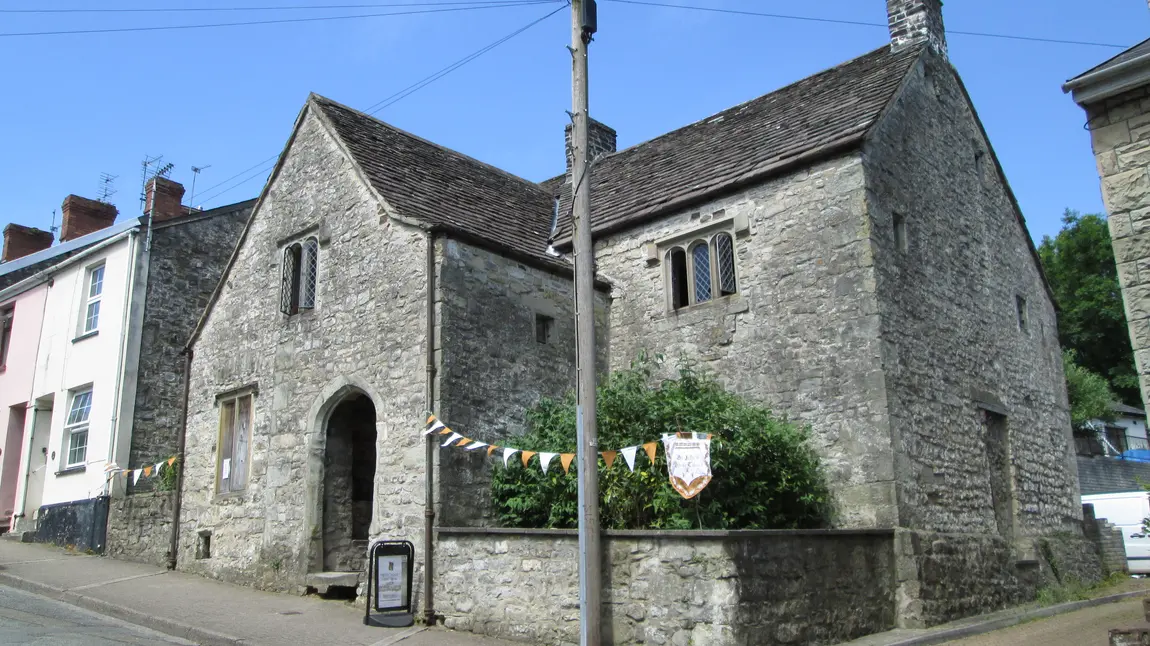Heritage Lottery Grant for the acquisition of St John’s House, Bridgend

This initial grant will enable St John’s House Trust, formed in 2012 with the sole purpose of purchasing the historic Bridgend Grade II* listed building, to develop their plans to transform it into a key community and heritage hub. Proposed plans for the project include training up to 80 volunteers, working with local schools and community groups, interactive displays and the creation of tea shop.
Commenting on the project, Jennifer Stewart, Head of HLF Wales, said: “Bridgend is one of HLF’s key development areas in Wales and we want to play our part not only in protecting the local heritage there but also help create sustainable community centres for future generations. St John’s House Trust are clearly aiming to ensure this historic building becomes an important, well-used facility and heritage centre in Bridgend. With such a long and interesting history, it is so important that buildings such as this are preserved and available for the entire community. We look forward to seeing these exciting plans develop.”
15th Century Origins
St John’s House, which is also known as St John’s Hospice, is the oldest non-religious building in Bridgend with some parts dating it back to 15th century. Based in Newcastle Hill, the building is a traditional 'hearth-passage house' from Tudor times but mystery surrounds its early history. Some accounts say it was a stop-off for pilgrims on the way to St David’s whilst others suggest it was also once used as a medieval hospital. As a result of National Lottery funding, its true history will be explored further as part of this project.
Welcoming this first-round support from HLF, Ken Hinton, Chair of St John’s House Trust, said: “Since establishing the Trust our key aim has been to safeguard this building for the local community in Bridgend. It has played a key part in the area’s history for over five centuries and we hope we will now be able to create a meeting place for the whole neighbourhood and make a positive contribution to the area.”
Notes to editors
Plans for the project include:
- The acquired two-storey Grade II* listed building will be conserved and brought back into better condition. As part of the project students and craft apprentices in traditional heritage construction skills will receive training opportunities.
- The primary function of the House will be a community facility for learning about the heritage of Bridgend. It will contain interactive displays and host a range of events and workshops. It will also comprise a tea shop and meeting rooms as well as a tea shop and small retail area.
- Other key works will see improvements to make the building accessible and refurbished including upgrading the first floor loading characteristics, providing an extension/stair pod, an access for all toilet, removing an existing window.
- Vital facility enhancements will include new heating and hot and cold water supplies, new ventilation systems with heat recovery, a unified exhaust vent camouflaged from view, installation of new separate lighting and power systems including a security system.
- A training programme including visitor management, marketing, customer care and building maintenance will upskill around 80 volunteers. A new education officer will oversee delivery of the activity plan and liaise with local schools, community groups, historical societies and tertiary education bodies.
Further information
Naomi Williams, on tel: 02920 442020 or email: naomi@positifgroup.co.uk